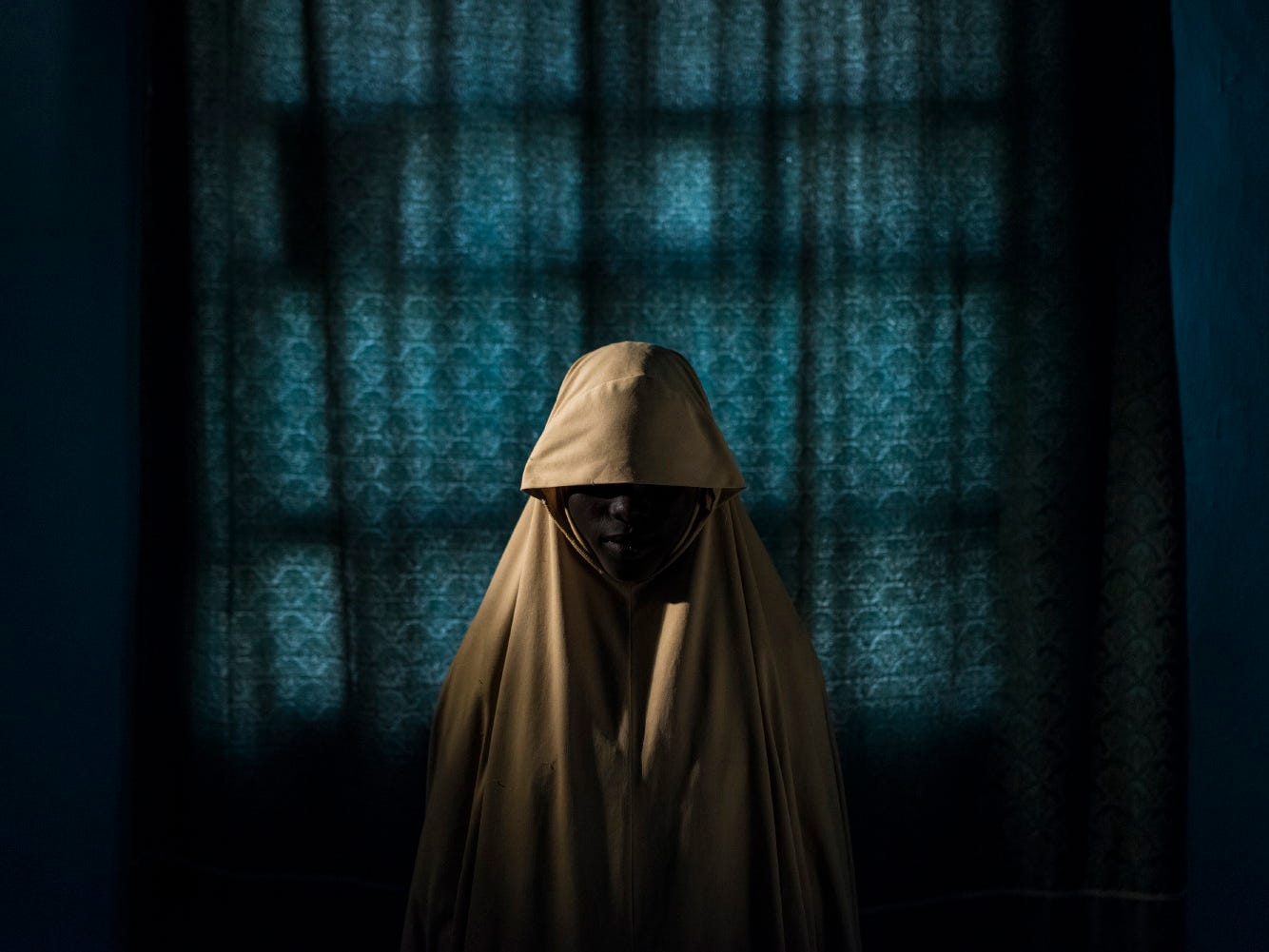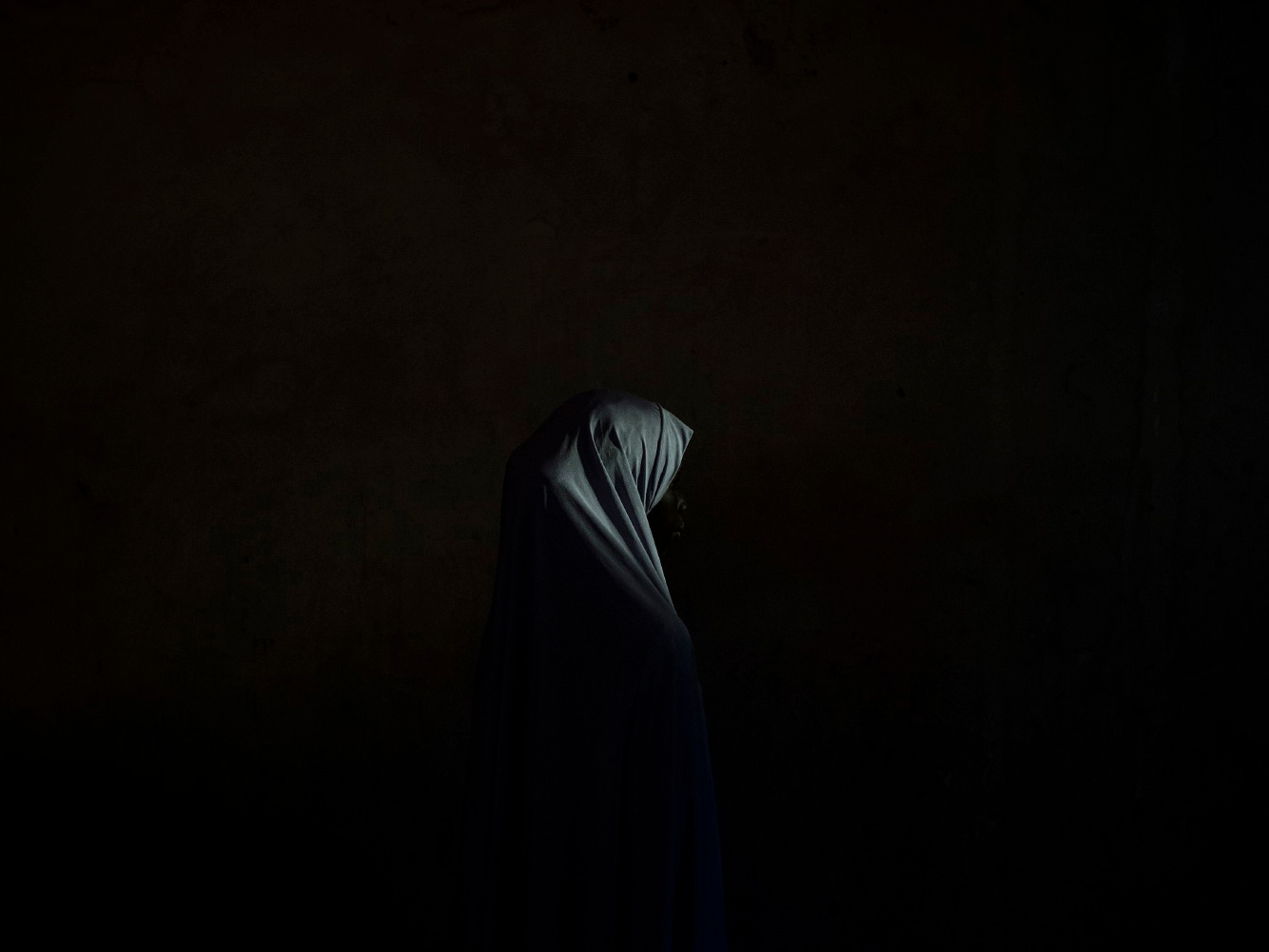The Bombs They Carried
Photographing young girls forced by Boko Haram to become suicide bombers
Please forgive me for the single late post this week. I returned from the wildfires in Oregon and California, and am scrambling to keep up. As always, thank you for your support and for following along.
In Maiduguri, the capital city of Borno State in northeastern Nigeria, military convoys patrol the streets in camouflage pick-up trucks and tan-colored, mine-resistant troop carriers. White vehicles stamped with the sky blue U.N. logo respond to the sprawling camps of displaced persons on the city's outskirts. The markets bustle, and women in a spectrum of hijab give color to dusty streets. As Maidguri's urban center fades into the bush, Boko Haram's control steepens. The conflict, which now also includes the splinter group of ISIS-West Africa, has consumed the Lake Chad Basin from Niger's desert to the north, to the highlands that straddle the border with Cameroon to the south, and arid Lake Chad to the east. The entire region is home to 30 million, and an estimated 2.4 million people have been displaced by drought and conflict.
In 2017, I traveled to Nigeria on assignment for The New York Times with their West Africa correspondent Dionne Searcey to report on a story about the Chibok girls—the 200-plus girls kidnapped from a boarding school in 2014, sparking the social media protest #BringBackOurGirls. The Nigerian government didn't grant us access to the released Chibok girls on this trip—we returned later to report the story linked above—and in the process of waiting, we traveled to Maiduguri to investigate other stories.
On our last day of reporting a story about young women who had been raped by Nigerian security forces, we interviewed a 13-year-old named Bana. She wore a chocolate brown headscarf and timidly relayed her story of first being kidnapped by Boko Haram, then being detained by the Nigerian military, where she was raped. Her story was so horrific I couldn't comprehend it. Then Bana shared something else with Dionne and I; she had also been trained and deployed as a suicide bomber by Boko Haram. But, instead of detonating herself, she surrendered, her small body strapped with explosives.
A public awareness poster on a central roundabout in Maiduguri depicted a cartoon of an angry-looking young woman in a suicide vest with a photo of smoke clouds superimposed behind her, "Our children are our future, not for suicide bombing." it said. UNICEF had recently released a report that attempted to calculate the number of children and specifically girls who had been blowing themselves up in the name of Boko Haram, and Dionne had reported on suicide bombings in the region previously. But until that day, we hadn't heard first-hand testimonies or seen any in-depth reporting on the young women being used as weapons of war in Nigeria. Dionne and I knew there were young women out there who had been through the same trauma. We wondered how many we could find.
Our contact on the ground in Maiduguri was Shehu Abubakar, a local Nigerian journalist with his contempt for authority and institutional religion. Most of the time, Shehu wore a modest Agbada in neutral colors. He had diabetic retinopathy, a degenerative eye condition that gave him an aloof, saintly demeanor. Shehu spent the next few weeks researching how many young women and girls were deployed as suicide bombers and surrendered. There was no official record, but he managed to find over 30.
Dionne and I pitched this story to our editors at the Times. In under a month, we landed back in Abuja with a box of chocolates for the government media liaison officer who would grant or deny our permit to travel to Borno State.
I knew going into the project that I couldn't show the faces of the women we would interview. It was too dangerous for them; Boko Haram had operatives in the communities they lived in, and some of the girls did not tell family members what had happened to them. They were scared of the stigma, and scared people would think they were loyal to Boko Haram.
As I conceptualized how to approach the work, I remembered the work of Belgium artist Michaël Borremans. In several of Borremans paintings, he depicts subjects from behind or with masked faces. Without facial expressions to guide the viewer, these paintings depict power and mystery through what the viewer can't see. This work became my guiding principle when I started photographing the girls in Nigeria.
Instead of blowing themselves up and committing an act of war, these young women had surrendered. They were courageous and resilient, and I wanted to reflect that. I decided to light each subject with a spotlight because I thought this would heroize the subjects by illuminating them in spaces with low light. I wanted to make a set of photographs that made the girls look dignified and mysterious, rather than victims. By lighting the photographs, I would bring each portrait out of purely photojournalistic context, and draw on symbolism from fashion photography.
On the ground in Maiduguri, each portrait came together ad hoc. Over three days, Shehu would arrange for a girl to meet us, and we would conduct an interview and a portrait sitting wherever we could—a Chinese restaurant, hotel rooms, rooms in safe houses. As I made this work, I had to think about each image as a set design and approached it accordingly. When each girl arrived at a new location, I would wander about the available rooms and look for a background that complimented the colors she was wearing. The girls' individual stories were so extraordinary they would give each photograph power. Since I was obscuring their faces, the success of the photography would rest on how I coordinated the colors between the subjects' clothes and backgrounds.
I photographed Fatima,16, at an abandoned building that had been overtaken by a group of people displaced by the conflict. She was wearing a bright pink headscarf and I posed her against a cracked concrete block wall. A crowd of residents gathered around us. Between the photos and me giving her directions, Fatima kept talking to the translator I was working with, she seemed adamant about something and I asked what she was saying. “She said she wants you to marry her and take her to Australia,” my translator said.
I missed hearing most of the girls’ stories firsthand; there just wasn’t time for me to sit in on Dionne’s interviews. It became a logistical battle; I would conduct a portrait sitting with one subject while Dionne interviewed another. These girls couldn’t spend too much time away from their families because they were worried about being asked where they were; most of them had not disclosed their stories to their extended family. Dionne later described how similar their stories were. “Most of them had been forced into carrying bombs after refusing to ‘marry’ a Boko Haram fighter. All of them were terrified.”,
Equipment and Brief
1/60-1/400 shutter speed
35 mm lens between F 2 and 2.8
ISO 800-2000
Profoto B2 flash head
Cine foil
I made these portraits with a DSLR and a 35mm F1.4 lens. I used the lens between F 2 and 2.8 to achieve a shallow depth of field. I exposed each photograph between one and two stops under the through lens metering and varied my ISO and shutter speed to achieve this because each room I worked in had different levels of ambient and natural light.
I had taken three flash heads to Nigeria and planned to light each portrait in a more complex way with a key light, fill, and sidelight; I naively didn’t consider how quickly I would need to make each portrait at different locations. There was no time to set up, meter, and shape and flag flash for each subject. For most of the photographs, I turned on the 50w modeling light in my flash head and used it as a single constant light. It was not the plan, but in the end, the quality of light felt more cinematic, and it was easy to shape because I could see what it was doing in real-time.
I shaped the light in each portrait with a piece of cine foil wrapped around the head like a malleable snoot. For example, in the photograph of Fiddausi, age 13, (above) I squashed the end of my makeshift cine foil snoot into a long slit, so it cast the light that stretches from the bottom left to the top right of the photo. Now you can see what I have done in the others, bend the cine foil snoot to give a unique spread of light, or shape of light.
There is one exception to the brief I just explained, the photo of Fatima, age 16 (above). For this image, I used the flash, a 2-second shutter speed, and an aperture of F 13. I directed Fatima to turn her head after the flash fired. By doing this, part of the exposure was made by the flash freezing her face, and part was from the ambient room light. This allowed me to obscure Fatima’s face by letting it blur.
Lighting Diagram
If you have questions about photography you’d like to have me answer, get in touch at mail@adamfergusonstudio.com











A powerful story that needs to be told. An unsettling mix of beauty and horror that was guaranteed to disrupt the reader. And as the reader we should be disrupted.
Absolutely gut-wrenching. So powerful!